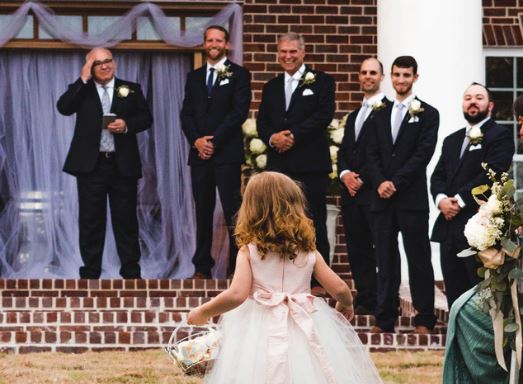Adding a touch of childlike wonder to weddings for as long as we can remember, the flower girl is not only adorable but is a well-loved wedding tradition too. The meaning and origin of the practice, however, is far from romantic.
There are two main things this tradition is connected to. According to Readers Digest, it signifies the bride losing her innocence and is based around fertility (like many other wedding traditions are).
In ancient Rome, most marriages were arranged and their purpose was more to ensure that the family name gets passed along to children, rather than for love and happiness. In those times, Readers Digest reports, only young people would attend to the bride.
A young girl would walk down the aisle before the bride in order to toss wheats and herbs on the walkway. This was done in order to bless the couple with fertility and prosperity, and of course, to chase away those pesky evil spirits. In the Medieval times, the tradition was roughly the same, however little girls scattered garlic rather than wheats and herbs.
From here, the tradition of little girls walking down the aisle with a bouquet of flowers became what it is today.
Readers Digest also reports that another point of having a little girl walk down the aisle first was to represent the transformation – showing the bride going from being a child to an adult. This is also why flower girls are often dressed similar to the bride.
Brides reports similar origins, however, they attribute the beginning of this tradition to the Greeks, in addition to the Romans.
As the tradition evolved, in the Elizabethan era, the flower girl (and all other children in the bridal party) were included to represent the idealisation of childhood, according to Brides. People during that time saw kids as a representation of hope and innocence.
Further along in history, in the Victorian Era, flower girls began to look more similar to those of today. They carried baskets of blooms and wore a floral loop on their heads, which represented everlasting, or unending, love.
Today, we still include children in our wedding parties. However, it’s unlikely that many people practicing the tradition believe it will bring them fertility, nor do they prescribe to the idea that by getting married a bride is giving away her “innocence”. The practice, these days, commonly revolves around the cute factor and the idea of having little nieces and nephews being part of such a special day.
Also read: The history of the ring bearer
Image: Unsplash




















